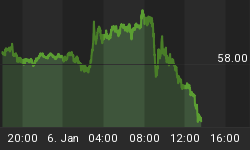Yesterday was a close above the NASDAQ 100's Critical Resistance level...
Last Tuesday, we discussed how the NASDAQ 100 had a Critical resistance level that went back to October 31, 2007. That date was the previous rally's high before the NASDAQ 100 stopped and plunged all the way down to 1018.
As we had mentioned last week, that 2239.23 resistance level was the next key test area to pay attention to.
That test happened yesterday, on the very first day of 2011. The result was a successful close at 2254.23 which was 15 points above that critical resistance level.
That was the necessary permission the NASDAQ needed in order to continue its upside trend.At 9:50 AM this morning, a Liquidity outflow condition showed up, so we may have to test the newly found 2239.23 support today.
What causes Liquidity outflow conditions?
It is a fairly simple calculation. If you add all the inflowing Liquidity coming in from investors, Institutions, Hedge funds, Mutual funds, foreign investors etc. ... and then subtract the total amount of selling, you get a net amount that is plus or minus. At 10 AM this morning, it was still a net minus which means money was flowing out of the market compared to the level that was flowing in at the end of the day yesterday.
At the same time, the net amount of outflows are currently pretty low, so today is not under a great amount of duress at this time. What we are seeing is a pretty natural and orderly profit taking picture.
(See today's second chart for a view of the current Liquidity inflow/outflow trending.)

This chart shows the Liquidity inflows and outflows on an end of day basis. Net inflows broke a support level on November 12th. and then reversed back up to a net inflowing condition on December 1st. This chart shows the current level as of 10:15 AM this morning.
Notice how the market corresponds to inflow and outflow levels.The maroon horizontal line at the top of the chart is a measure of peak inflowing levels. (The two month period we are showing on the chart are at very high expansionary levels. Last May to last July were at very low Contraction levels.)

















